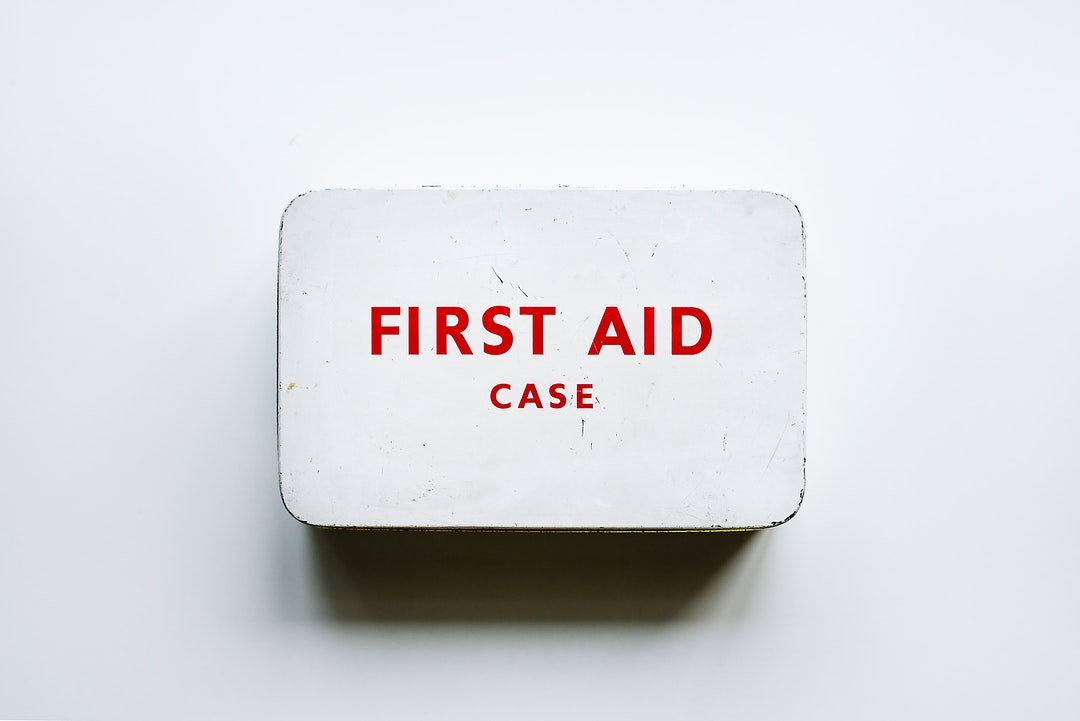Did you know that the first hour after a traumatic injury is the most critical to receiving care?
According to the CDC, unintentional injury has long remained the leading cause of death for persons between 1 and 44. And had effective first aid been applied right away, some of those cases may have been preventable.
First aid refers to the immediate medical attention that anyone can provide in the moments after an injury and is usually on-site. It can prevent a situation from worsening or preserve life until medical care arrives.
If you’re not sure what you would do in an emergency, check out our first aid guide to learn some safe practices.
First Aid Guide
Having a basic plan of action will be your first tool in any emergency. It will help you assess the situation to know what steps to take next or what type of aid may be needed.
In an emergency, here’s what you should do:
- Recognize the emergency
- Ensure the scene is safe
- Obtain consent
- Check the person’s injuries
- Call 9-1-1 if necessary
- Care for the person until further help arrives
This framework will provide you with your primary course of action. But as with any good first aid kit, this is just the first of several tools in our first aid guide arsenal.
First Aid Kit Essentials
During an emergency, time is of the essence. So it’s vital to act as quickly as possible; you don’t want to waste time rummaging through cabinets or drawers searching for supplies.
That’s why having a properly stocked first aid kit handy is essential to providing the best care for injuries. Most first aid kits contain the following basic supplies:
- Wound dressings
- Bandage rolls
- Bandaids in assorted sizes
- Antiseptic wipes
- Gauze pads
- Adhesive tape
- Antibiotic ointment
- Scissors
- Tweezers
- Aspirin
- Ibuprofen
- Cold compress
Much of the content you’ll find in first aid kits you may already be familiar with. However, the items equipped will differ depending on the size of the kit and its intended use.
First aid kits should be made readily accessible in every home, school, and place of work. Small first aid kits are great for keeping in the car, for situations that may arise on the road or away from populated areas.
How to Administer First Aid
Along with being equipped with the proper tools, it’s vital to equip yourself with the skills and techniques needed to administer first-aid effectively.
First aid skills can require varying degrees of practice. Some are relatively easy to learn, while others may require training or special certification. Practical first-aid skills include learning how to:
- Recognize a stroke or heart attack
- Administer CPR
- Operate an AED
- Perform the Heimlich maneuver
- Treat bee or wasp stings
- Provide wound care and bleeding control
The initial moments after an injury are often the most critical. While waiting for first responders to arrive, bystanders with knowledge of basic first-aid methods may be able to take life-preserving measures.
Prepare Yourself Today
With our first aid guide in hand, you can begin to arm yourself with the skills and tools necessary to provide adequate first aid care and possibly save a life.
Did you find this article helpful? Then, check out the health section of our blog for more great tips, from health benefits to home remedies!








